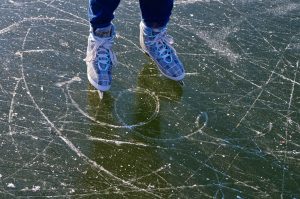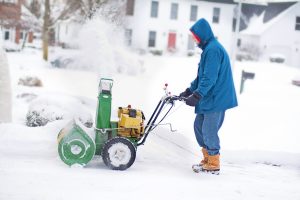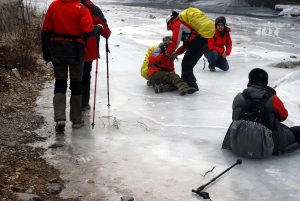Ignoring snow safety is a leading cause of lost days from work in the U.S.
According to the National Safety Council, slips, trips, stumbles and falls were the third most common cause of nonfatal workplace injury in 2020 and the second most common cause of workplace fatality in the same year. While these workplace accidents can happen at any time of year, winter weather conditions significantly increase the probability of these types of accidents.
In fact, the latest statistics from the U.S. Bureau of Labor Statistics show that in 2017, over 20,000 workplace injuries linked to ice, sleet, or snow required employees to take at least one day off work. And in 2020, ice, sleet, or snow was responsible for 41.5% of weather-related workplace fatalities. Winter conditions are incredibly dangerous for your employees, and a winter slip can rack up an average of $47,681 per workers’ compensation claim, as well as increase insurance premiums and cause a major hit to productivity.
With the Weather Turning Frigid, Company Safety Directors can Help Assure Worker Security with These Simple Snow Safety Workplace Winter Safety Tips:
- Clear walking surfaces of snow and ice to prevent slips, trips, and falls.
- Always have employees wear footwear with non-slip or non-skid treads for increased traction.
- Ensure outdoor workers wear brightly colored or reflective clothing to make themselves visible to drivers.
- Inspect company vehicles to make sure they’re in good working condition for winter driving. Make sure batteries are charged, tires are properly inflated and there is at least a half-full tank of gas.
- Inform employees of winter driving hazards. Always have employees remove ice and snow from windows, mirrors, and lights. Have them increase their following distance from 3-4 seconds to 8-10 seconds on wet or snowy roads to leave room in case they need to stop.
- Make sure that powered equipment like snowblowers are properly grounded to protect workers from shocks or electrocution.
- Evaluate snow removal tasks for hazards and plan how to do the work safely.
- Educate employees on the risks of overexertion in the cold. Frigid temperatures can increase the risk of hypothermia, frostbite and heart attack — even in otherwise healthy individuals.











